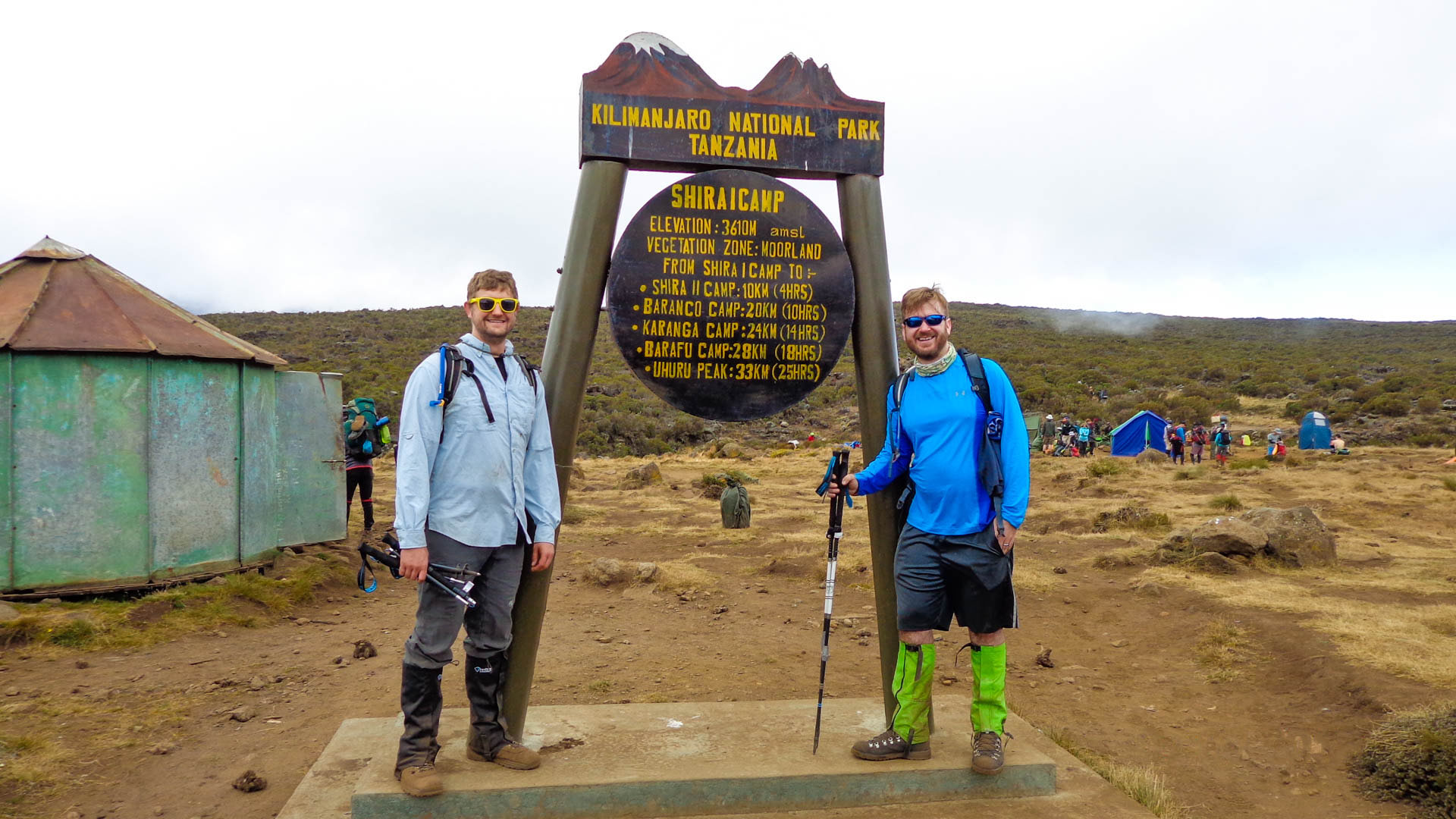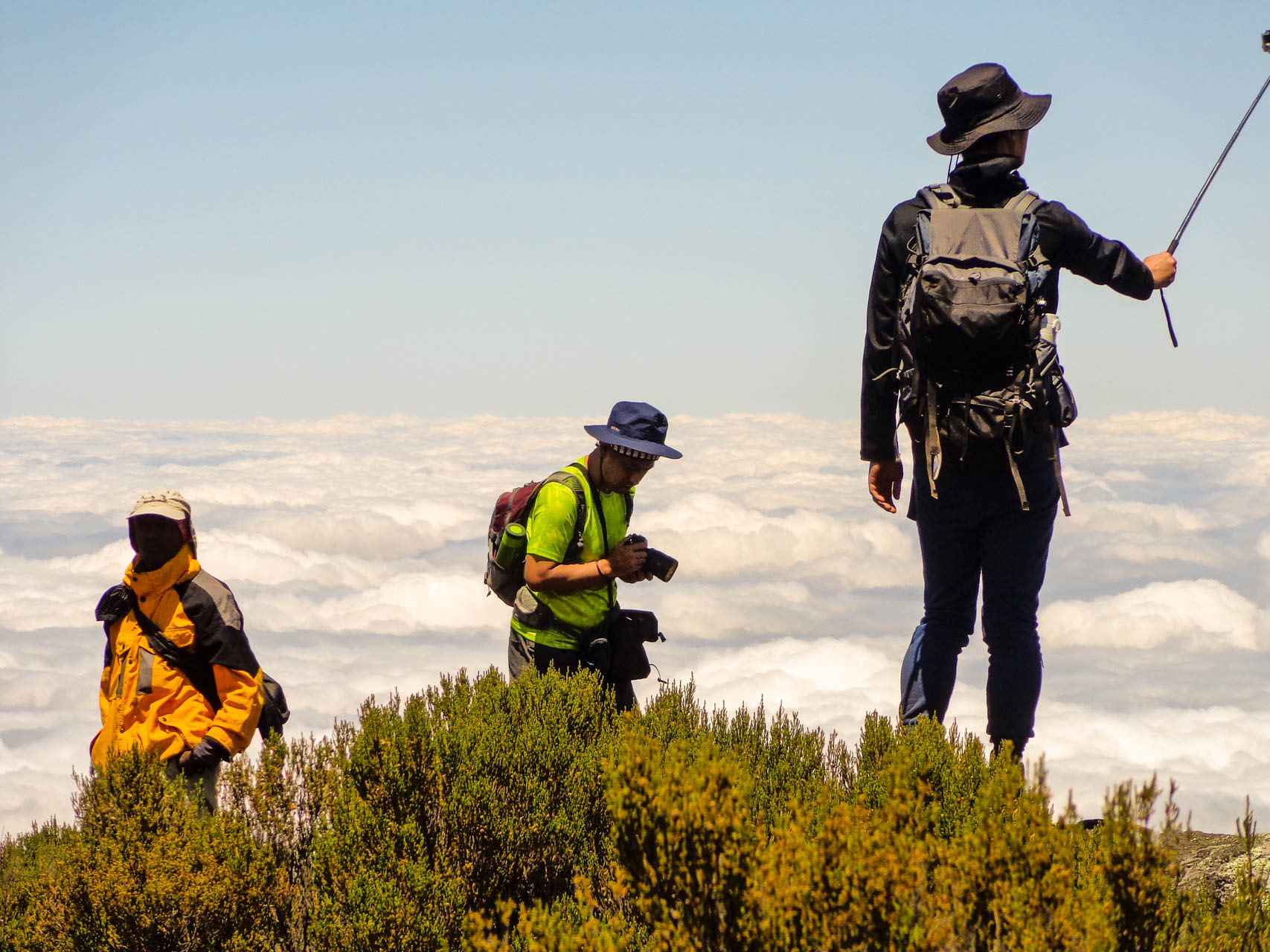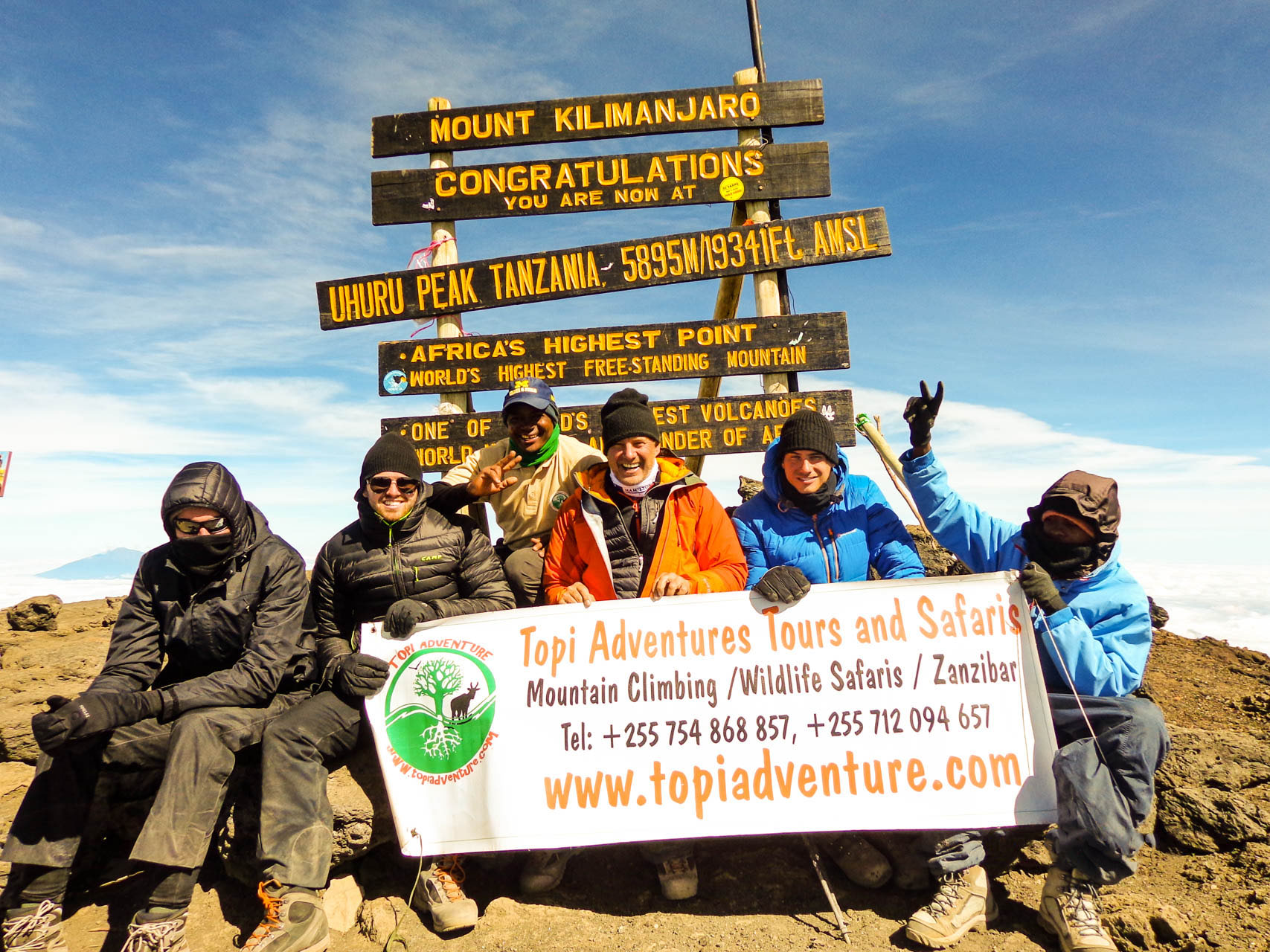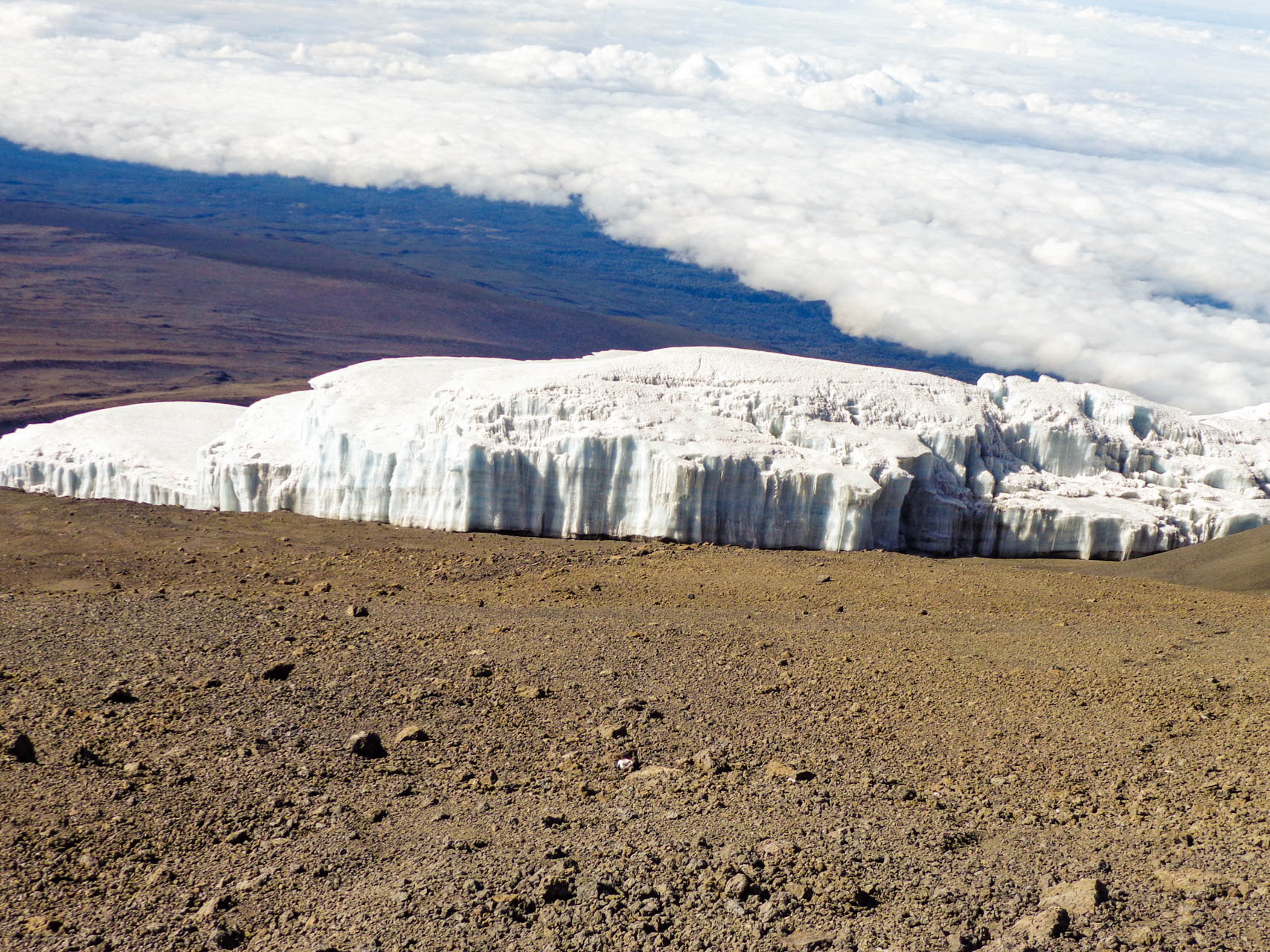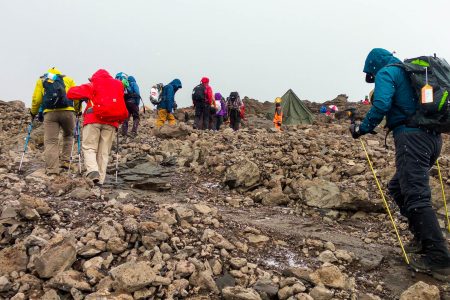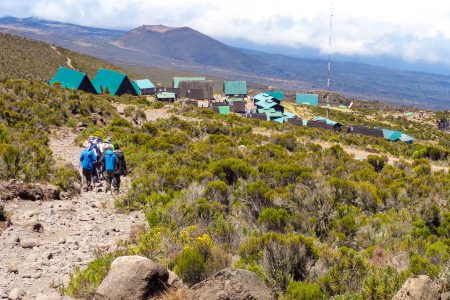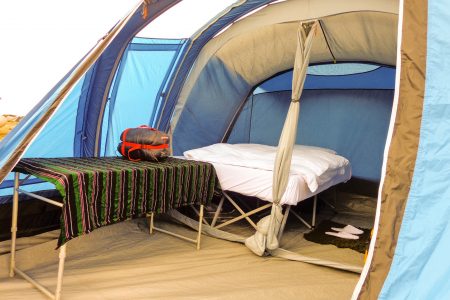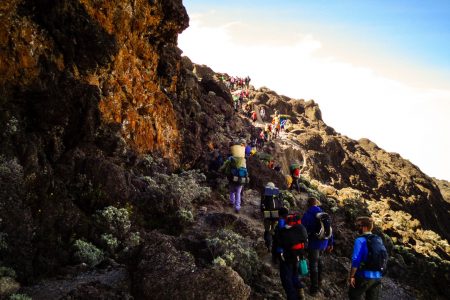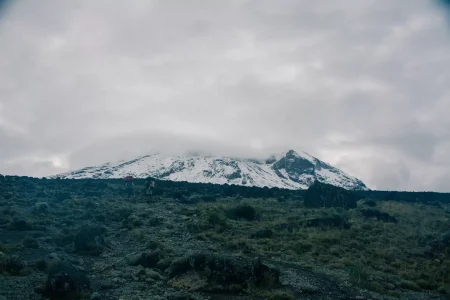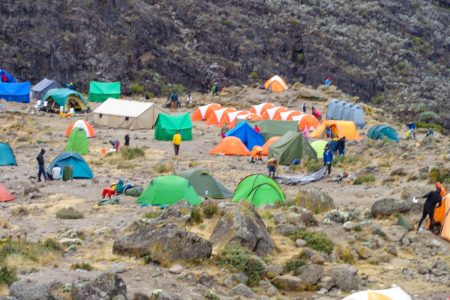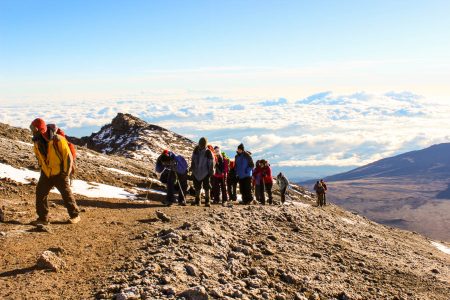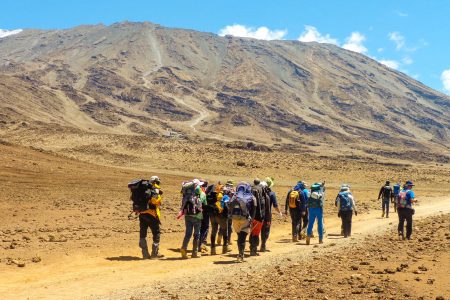Elevation (ft): 15,331 ft to 19,341 ft to 10,065 ft; Distance: 17 km; Hiking Time: 11-14 hours; Habitat: Arctic.
Very early in the morning (midnight), we put on many layers of clothing and begin our climb to the summit. We head in a northwesterly direction and ascend through heavy scree towards Stella Point on the crater rim. This is the most mentally and physically challenging portion of the trek. At Stella Point (18,600 ft), we stop for a short rest and will be rewarded with the most magnificent sunrise you are ever likely to see. From Stella Point, we have just one more hour before reaching the summit. At Uhuru Peak, you have reached the highest point on Mount Kilimanjaro and the continent of Africa.
Faster hikers will see the sunrise from the summit. From the summit, we now make our descent continuing straight down to the Mweka Hut camp site, stopping at Barafu for lunch. Mweka Camp is situated in the upper forest. Later in the evening, we enjoy our last dinner on the mountain and a well-earned sleep.

